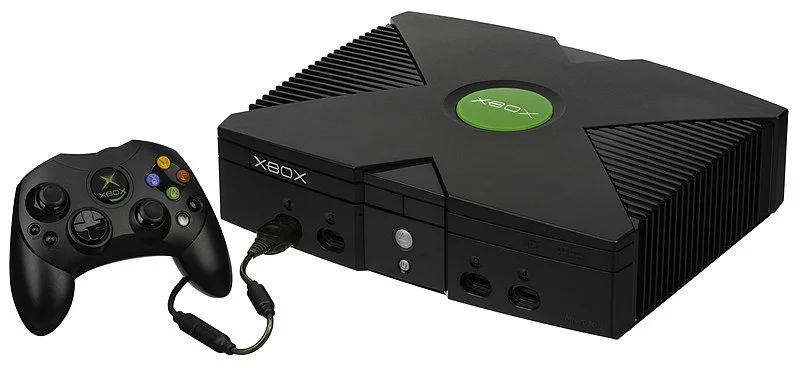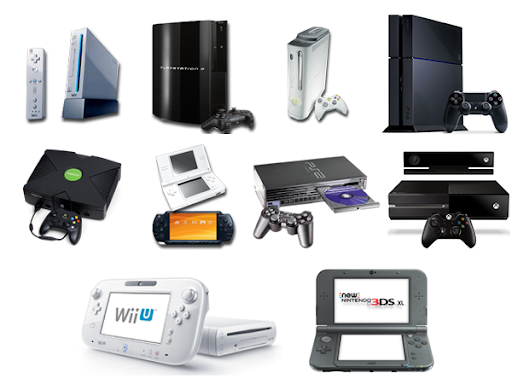About this blog
This is Ernest Cabrera blog, with his background and point of view about gaming and tech.
Hi reader, if you want to explore in-depth articles on the tech, gaming, mobile gaming industry, project management techniques, creative processes, and more. Whether you're a gaming enthusiast, project manager, or developer, there's something here for everyone.
Latest Posts:
Understanding KPIs in Mobile Games: A Complete Guide
Dive deep into key performance indicators (KPIs) that drive success in mobile games, from retention rates to monetization strategies.
Read more →My passion for gaming: A Lifelong Journey (part 1)
Understand the roots of my passion for gaming, from the early 90s to early 2000s.
Read more →My passion for gaming: A Lifelong Journey (part 2)
Continue with my passion for gaming and how it took me to Tech.
Read more →
Understanding KPIs in Mobile Games: A Complete Guide - part 1
It all begins with an idea.
There are several key performance indicators (KPIs) and metrics that are essential for understanding and optimizing user acquisition. These metrics help you assess the quality of traffic and user engagement, which is crucial for the success of your app or game. Below, I’ll explain each KPI, provide examples, and suggest how to analyze them, accompanied by a description of visualizations you can use.
1. Downloads (Installs)
Definition: The total number of times your app is installed by users.
Why it matters: Downloads are the starting point for understanding how well your app is attracting new users.
Example: Your app receives 10,000 installs in a month, but only 2,000 users are still active after the first week. This suggests that you may need to improve your onboarding or user retention efforts.
How to analyze:
Organic vs. Paid: Analyze the breakdown between paid and organic installs to understand which source is more cost-effective.
Segment by source: Compare installs from different marketing campaigns, app stores, or countries.
Graph: A bar chart showing the number of installs per source (e.g., Google Ads, organic search, app store search).
2. K-factor (Virality Index)
Definition: Measures how viral your app is by looking at how many new users existing users invite to the app.
Why it matters: A high K-factor indicates strong organic growth, as users bring in more users without additional marketing spend.
Formula:
K-factor=Invites Sent per User * Conversion Rate
Example: If each user invites 2 friends, and 10% of those friends install the app, your K-factor would be:
2×0.1=0.22 \times 0.1 = 0.22×0.1=0.2
This means 1,000 users would bring 200 more users through virality.
How to analyze:
If the K-factor is greater than 1, the user base grows organically.
If the K-factor is less than 1, paid marketing efforts are needed to sustain growth.
Segment by user group: Track which types of users (e.g., those acquired via referrals) are more likely to invite others.
Graph: A line chart showing the number of invited users over time, along with the corresponding K-factor per period (e.g., weekly or monthly).
3. ROI (Return on Investment)
Definition: Measures the financial return on your acquisition costs.
Why it matters: ROI shows how effectively you’re turning marketing dollars into revenue.
Formula:
ROI=InvestmentRevenue−Investment×100%
Example: If you spend $500 on ads and make $1,000 in revenue, your ROI is:
((1000−500) / 500)×100% = 100%
How to analyze:
Break down ROI by campaign to see which marketing channels are most effective.
Track ROI over time to see how the performance of your campaigns changes (e.g., Day 7 ROI, Day 30 ROI).
Compare ROI across regions to find the most profitable markets.
Graph: A scatter plot showing ROI by campaign or a line graph tracking ROI over time.
4. ARPU (Average Revenue per User)
Definition: The average amount of revenue generated per user, including paying and non-paying users.
Why it matters: ARPU helps you assess how much value each user brings to your app.
Formula:
ARPU=Total Revenue / Total Users
Example: If you earn $10,000 in a month and have 5,000 users, your ARPU is: 10,000/5,000=2 USD per user
How to analyze:
Compare ARPU across different user segments (e.g., paying vs. non-paying users).
Track ARPU over time to see if user value is increasing as they spend more.
Use ARPU to evaluate the quality of different acquisition channels.
Graph: A bar graph showing ARPU per user segment or a line chart tracking ARPU over time.
5. Retention Rate
Definition: The percentage of users who return to the app after their first use.
Why it matters: Retention shows how well your app keeps users engaged. A high retention rate suggests a healthy user base.
Example: If you have 1,000 users, and 300 of them return after 7 days, your 7-day retention rate is: 3001000×100%=30%
How to analyze:
Track retention rates for different time periods (Day 1, Day 7, Day 30) to understand user drop-off points.
Compare retention by acquisition source to see which campaigns are bringing in more loyal users.
Use cohort analysis to track how different groups of users behave over time.
Graph: A cohort analysis heatmap showing retention rates over time, segmented by user acquisition date.
6. LTV (Lifetime Value)
Definition: The total amount of revenue you can expect to earn from a user over their entire relationship with your app.
Why it matters: LTV helps you determine how much you can spend on acquiring users. If your LTV exceeds your acquisition costs, you’re in a good position.
Formula:
LTV=ARPU×Average User Lifespan
Example: If your ARPU is $5 and users typically stay active for 6 months, your LTV is: 5×6=30 USD per user
How to analyze:
Compare LTV across acquisition channels to see which one brings the highest-value users.
Use LTV to calculate ROI and decide how much to spend on acquiring new users.
Track LTV growth as you improve user retention and monetization efforts.
Graph: A line chart showing the growth of LTV over time, or a bar chart comparing LTV across different acquisition sources.
7. CPI (Cost per Install)
Definition: The amount of money spent to acquire a new install.
Why it matters: CPI helps you understand the cost-effectiveness of your user acquisition campaigns.
Formula:
CPI=Total SpendTotal Installs
Example: If you spend $1,000 on ads and get 500 installs, your CPI is: 1000500=2 USD per install
How to analyze:
Track CPI for each campaign to identify which ones are delivering the lowest-cost installs.
Compare CPI across regions and platforms to optimize your budget allocation.
Aim to keep CPI below LTV to maintain profitability.
Graph: A bar chart comparing CPI across different campaigns or platforms.
Summary
Here’s a quick visual breakdown of the KPIs and their importance:
Main KPIs
By tracking and optimizing these KPIs, you can make informed decisions that will help you improve the quality of your user base and ensure the profitability of your app.
My passion forgaming: A Lifelong Journey (part 1)
It all begins with an idea.
My Passion for Gaming: A Lifelong Journey part 1 - The Early Days
PC Futbol 5.0, the most famous football simulation game in Spain in the 90s.
Gaming has been a central part of my life since childhood. I spent countless evenings immersed in the strategic depths of Age of Empires, commanding armies and crafting tactics to outsmart my opponents. The intensity of the battles in PC Fútbol had me managing teams with precision, carefully planning each match as if I were on the sidelines of a real stadium. These early experiences planted the seeds of a passion that would grow over the years, combining both strategy and action to fuel my love for gaming.
My first foray into console gaming came with the iconic Gameboy and the powerful Sega Megadrive. The Gameboy introduced me to the world of handheld gaming, with its monochrome screen that could transport me to new adventures no matter where I was. Meanwhile, the Sega Megadrive brought home some of the best gaming experiences of the time, from platformers such as Sonic and Sonic 3D to action-packed adventures like The Lion King. It was a thrilling time, and these early consoles opened the doors to immersive worlds where imagination thrived.
However, despite my love for console gaming, my dream of owning a PlayStation remained just that—a dream. Family restrictions made it impossible, and despite my persistence, I wasn’t able to experience Sony's PlayStation at the time. Still, my love for gaming never wavered. Instead, I threw myself into the ever-evolving world of PC gaming. Titles like Starcraft allowed me to explore complex sci-fi worlds, while Driver brought adrenaline-pumping car chases to life. The thrilling chaos of Grand Theft Auto 2, with its top-down action and endless mayhem, kept me hooked for hours.
As gaming technology advanced, so did my determination to stay at the cutting edge. The release of Grand Theft Auto 3 was nothing short of a revelation—its massive open world, dynamic freedom, and immersive storytelling changed the gaming landscape forever. To make sure I could experience it fully, I upgraded my PC, investing in a new graphics card just to handle the demands of such an ambitious game. This felt like a defining moment for me, one where the boundaries between reality and virtual worlds began to blur, further cementing my dedication to gaming.
PlayStation 2, Sony´s incredible sucess
2nd most sold console in videogames history
In the early 2000s, when the PlayStation 2 was announced, my excitement reached new heights. The PS2 wasn’t just another console—it represented a leap forward in gaming technology. With promises of cutting-edge graphics, DVD playback, and a vast library of innovative games, it was poised to redefine what home entertainment could be. I found myself eagerly devouring every issue of Hobby Consolas and Micromanía, two of Spain’s most renowned gaming magazines. These magazines were my gateway into the world of consoles, offering sneak peeks, reviews, and rumors about the PS2’s potential.
I can still remember the feeling of turning the pages and marveling at the screenshots of upcoming games like Metal Gear Solid 2, Final Fantasy X, and Gran Turismo 3. Each preview made the PlayStation 2 seem like an unattainable dream machine. The articles would detail every technical aspect of the console—the 128-bit "Emotion Engine" processor, the revolutionary graphics, and the enormous possibilities the system held for developers. As someone who missed out on the original PlayStation era, the PlayStation 2 felt like my ticket to experiencing the best of both worlds: the latest innovations and the ability to dive into the vast library of PlayStation classics.
But there was one thing that stood between me and this gaming revolution: the launch price. At 75,000 pesetas (about 449 euros at the time, or roughly $545 in 2024), the PlayStation 2 was far beyond my reach. For a teenager like me, the price tag felt like an insurmountable barrier. I was crushed, knowing that owning the console on my own was nearly impossible. My parents had been supportive of my passion for gaming to a degree, but I knew asking for something this expensive would be difficult.
Determined not to give up, I struck a deal with my parents. If I achieved top marks in school, they promised to reward me with the PlayStation 2. This became my driving motivation during my final year of high school, a pivotal time as I was preparing for university. Not only was I pushing myself to get into the program I wanted, but now I had the added incentive of the PlayStation 2. That year, I worked harder than ever, fueled by the dream of finally having the console that could unlock so many new worlds for me.
When I got my final report card, I had done it—I hit the high scores my parents had asked for. I was ecstatic, knowing that I had fulfilled my end of the bargain. However, life had a funny twist in store for me. Instead of the PlayStation 2, I received an Xbox. My immediate circle of friends had all started purchasing Xbox consoles, and me and my parents, influenced by my friends choice, decided it would be better if I had the same system as my friends.
At first, I was a little disappointed. I had dreamed of the PlayStation 2 for so long, and I had all but envisioned myself playing Final Fantasy or sneaking through Metal Gear Solid. But that disappointment quickly faded as I started exploring the Xbox and its library. The Xbox turned out to be a completely different experience, offering its own range of games that quickly captured my attention. What followed was an unforgettable chapter in my gaming life.
First console from Microsoft
The Xbox became the centerpiece of many social gatherings. My friends and I began what we fondly referred to as "Xbox parties." We would meet up at each other’s houses for long afternoons filled with multiplayer sessions. Halo became a cornerstone of these events—its epic battles and cooperative gameplay made it the ultimate game for our group. I remember the joy of strategizing with my friends, working together to take on enemies in the campaign, or going head-to-head in competitive multiplayer matches. The feeling of being part of a team, communicating and adapting strategies, brought a level of immersion I hadn’t experienced before. And then there was Dead or Alive 3, a visually stunning fighting game that left us all in awe of the Xbox’s power.
Those multiplayer sessions were more than just gaming—they became social events that strengthened my bonds with friends. Gaming had evolved from a solitary activity to something deeply communal, where victories were shared, and defeats were a reason for laughter. The Xbox, while not my original choice, had gifted me some of the best gaming memories of my life.
My passion forgaming: A Lifelong Journey (part 2)
It all begins with an idea.
After graduating from high school, studying Business at ESADE was a natural progression for me. My passions for tech, business, and gaming converged in this choice, but I quickly realized that juggling the demands of an elite business school left little room for my gaming pursuits. Despite this, gaming never truly left my life. During breaks, my friends and I would dive into Pro Evolution Soccer 3 on a PS2, and I finally got to experience legendary games like Final Fantasy and Metal Gear Solid 2—titles I had only read about in magazines.
Gaming reappeared in an unexpected form when ESADE organized an Xbox tournament featuring Halo. I paired up with a friend, and our teamwork, honed through countless Xbox party nights, proved unstoppable. We dominated the competition, and our victory earned us an Xbox, which I sold to finally purchase a PlayStation 2. This long-awaited console allowed me to dive into Dragon Ball Z Budokai 3 and Tenkaichi—games that became the centerpiece of many late-night gaming sessions with friends.
The release of the Xbox 360 marked another significant chapter. Gears of War left me in awe with its gritty gameplay and revolutionary graphics. After working as a bank teller one summer, I saved enough to buy the console, and my girlfriend gifted me FIFA 10, marking my shift from Pro Evolution Soccer. The combination of Halo 3’s stunning visuals and the thrilling competition of Call of Duty 4 on Xbox Live became defining experiences of this era. Even during my semester abroad in Copenhagen, my Xbox 360 came along, serving as a bridge that connected me with new friends.
Post-graduation, I aspired to break into the gaming industry, but with no direct experience, it seemed out of reach. My journey took a detour into tech, landing a role at Hewlett-Packard as a Marketing Assistant in the Large Format Printing division. This role was a crash course in data analysis, teamwork, and meeting tight deadlines—skills that would prove invaluable.
After a year at HP, I ventured into entrepreneurship, setting up a webshop selling various products, including condoms. This experience was my introduction to e-commerce, SEO, and SEM, running social media campaigns and optimizing content for better search engine performance. This short yet intense period taught me a lot about digital marketing and laid the groundwork for my next big move—joining Google, a chapter I’ll explore in detail next.
Gaming was always more than a hobby; it was a passion that shaped my experiences and influenced my career path. From the thrill of multiplayer sessions with friends to the discipline learned from balancing studies and gaming, each step of my journey has been about merging my love for games with my professional ambitions.
In the next part, I'll dive into how these early experiences, skills from tech roles, and my entrepreneurial spirit led me to Google, where I embarked on a new adventure that brought my career dreams closer to reality.
My passion forgaming: A Lifelong Journey (part 3)
It all begins with an idea.
Tune in soon
About Mobile gaming: User Acquisition Manager role
It all begins with an idea.
As a User Acquisition Manager, your role revolves around understanding and optimizing key metrics to drive growth.
Let's break down each factor and explore examples, drivers, and areas you can influence.
1. Downloads (Installs)
What it is: The total number of people who install your app or game. However, not all downloads are created equal—some might be more valuable than others.
Example: You launch an ad campaign, and your app receives 10,000 downloads in the first week. But only 1,000 of those users stick around after a month. That means the majority of your installs aren’t engaging.
Drivers:
App Store Optimization (ASO): Improve your app’s visibility in the store through better icons, compelling screenshots, and keyword optimization.
Paid ads: Google Ads, Facebook Ads, TikTok campaigns, etc., to boost installs.
Virality: Word-of-mouth recommendations or social sharing, which can generate organic installs.
What you can influence:
Target audience: Run campaigns targeting users who are more likely to engage with your app (based on location, behavior, etc.).
App quality: Improve user onboarding and app performance to reduce churn after installation.
Conversion rates: Increase the likelihood that a user who views your app page will install it by enhancing your ASO and reviews.
2. K-factor (Virality)
What it is: A measure of how many new users your current users bring through referrals or word-of-mouth.
Example: If each of your users invites 2 friends and 10% of those friends install the app, your K-factor is 0.2. To grow, you need a K-factor above 1 (more users invited than you lose).
Drivers:
Sharing incentives: Offer rewards for users who invite friends (e.g., in-app currency, exclusive content).
Social sharing features: Make it easy for users to share their achievements or experiences directly from your app.
Community building: Foster a sense of belonging that encourages users to naturally recommend your app to others.
What you can influence:
Referral programs: Design referral programs that motivate users to share the app (e.g., a user gets a reward if a friend installs and engages with the app).
Social integration: Make it seamless for users to share their activity on social media platforms.
Content creation: Encourage user-generated content that spreads across social channels, increasing visibility and organic installs.
3. ROI (Return on Investment)
What it is: A measure of how much revenue you’re earning compared to what you’re spending on user acquisition.
Example: If you spend $1,000 on ads and those users generate $2,000 in revenue, your ROI is 100%. However, if you spend $1,000 and only generate $800, your ROI is negative (-20%).
Drivers:
Cost per Install (CPI): The lower your CPI, the more efficient your user acquisition efforts.
Lifetime Value (LTV): The higher the average revenue generated by a user over their lifetime, the better your ROI.
Retention rate: Keeping users engaged longer increases their LTV.
What you can influence:
Campaign efficiency: Optimize your ad spend by targeting high-LTV users and minimizing wasted budget on low-value users.
User onboarding: Improve the first-time user experience to increase the likelihood that users will stay engaged and spend money.
Personalization: Tailor in-app offers, content, or ads based on user behavior to maximize engagement and revenue.
Influencing Factors and Strategies
1. Paid Traffic (Installs):
Influence: You control the budget, targeting, and creatives.
Tactics:
Set up A/B tests for ad creatives and audience segments.
Use lookalike audiences to find users similar to your best customers.
Work with influencer marketing to reach engaged communities.
2. Organic Traffic (ASO and Virality):
Influence: You can optimize app store listings and build community engagement.
Tactics:
Regularly update your app’s keywords and metadata based on search trends.
Localize your app store page to increase visibility in different markets.
Encourage user reviews and respond to them to improve ratings.
3. Retention and Monetization (LTV and ROI):
Influence: You can enhance the in-app experience and retention efforts.
Tactics:
Create personalized user journeys to keep users engaged longer.
Implement push notifications and in-app messaging to boost user engagement.
Offer targeted in-app purchases or subscriptions based on user behavior.
Conclusion: As a User Acquisition Manager, you’re at the forefront of driving growth. You can influence installs through ASO and paid ads, boost virality with sharing incentives and community engagement, and optimize ROI by targeting high-LTV users and refining your ad spend. By keeping an eye on these key metrics—downloads, K-factor, and ROI—you can ensure your acquisition strategies are not just about quantity but quality too!











